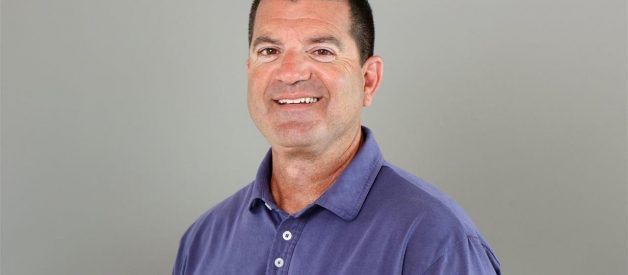(BPT) – Father, business owner and Rhode Island native Steve B. was forced to spend the holidays sidelined with shingles at the age of 51.
‘I look forward to the holidays every year. In addition to the fun and festivities of the season, I get a little downtime to enjoy my favorite things: spending time with my family, working out and watching sports,’ Steve said. ‘But that holiday season, I felt an odd burning pain I’d never felt before.’
Steve and his wife were on their way to a New Year’s Eve party when he began to feel discomfort and pain in his back. Steve’s wife took a look, but didn’t see anything unusual. Steve expected the pain to subside on its own. However, the next morning, when Steve asked his wife to look at his back again, she was shocked to find a blistered rash. He knew he had to seek medical attention – fast.
‘I thought about making an appointment when the symptoms started, but I didn’t have the words to describe this unusual back pain, nor were my symptoms visible to the naked eye,’ Steve recalled. ‘What could I say? ‘Hey Doc, my back is burning?’ Would that even help?’
When Steve was finally able to see his doctor, he was immediately diagnosed with shingles.
Anyone who has gotten chickenpox is at-risk of contracting shingles, also known as herpes zoster.[1] When chickenpox becomes dormant within the nerves, it can reactivate later in life, causing shingles.[2] Shingles typically presents as a painful, itchy rash that develops on one side of the body and can last for two to four weeks.[3]
Shingles kept Steve from doing the things he loved the most. ‘I never call out of work. Because of shingles, I missed three days. As a proud father of a high school athlete, I never miss one of my daughter’s basketball games. Because of shingles, I missed three games.’
After a long two weeks from the start of his symptoms, Steve began to feel better. He never considered vaccination and thought he was too young to contract the disease when, in fact, approximately one in three people in the United States will develop shingles in their lifetime.[4]
‘My experience with shingles affected everyone around me. My wife and children, used to seeing me energetic and lively, were blown away at how worn out I was for days on end. After seeing the impact of this virus, both my business partner and brother ran out to get the shingles vaccine.’
Steve learned firsthand that shingles doesn’t play favorites. As a GSK spokesperson, Steve wants to educate others about shingles symptoms, risks and the importance of vaccination. He insists, ‘Don’t assume you aren’t at risk due to age – talk to your doctor about how you can help prevent shingles from happening to you.’
If you’re 50 years of age and older, talk to your doctor about vaccination against shingles. Vaccination will help reduce the risk of developing shingles and the potential long-term pain from post-herpetic neuralgia, a common complication caused by the disease.
For more information, visit www.ShinglesDoesntPlayFavorites.com.
This is one person’s experience; other people’s experiences with shingles may be different.
Content sponsored by GSK.
[1] CDC. Shingles (Herpes Zoster). About Shingles (Herpes Zoster). Available at: https://www.cdc.gov/shingles/about/index.html
[2] CDC. CDC Recommends Shingles Vaccine Press Release. Available at: https://www.cdc.gov/media/pressrel/2008/r080515.htm
[3] CDC. Shingles (Herpes Zoster). Signs & Symptoms Available at: https://www.cdc.gov/shingles/about/symptoms.html
[4] CDC. Vaccine Information Statements (VISs). Live Shingles VIS. Available at: https://www.cdc.gov/vaccines/hcp/vis/vis-statements/shingles.html
